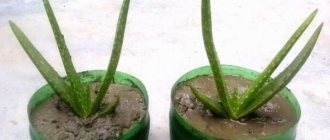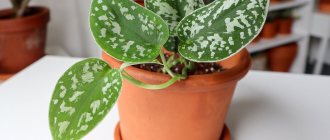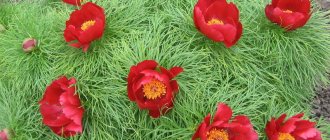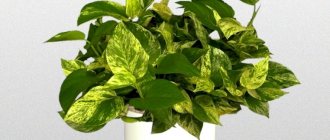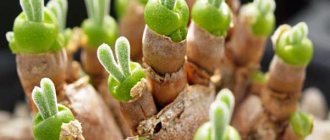Author: Miroslava Danich Category: Houseplants Published: July 22, 2013Last edits: November 16, 2020
indoor vines or climbing indoor plants at home. After all, a real gardener will not tolerate empty walls and will definitely hang at least a couple of flower pots. But vines are not only flowers for decorating walls. Many indoor vines feel great twining around special flower stands and ladders. In this case, the plant is formed in a special way. There are many varieties of indoor vines. There is a whole classification of these colors. But they are united by some general rules of care, which often differ from the principles of growing ordinary plants. Therefore, before you bring a curly green beauty to your home, find out in more detail how to care for the vine at home.
Such similar and different vines
Almost all vines are inhabitants of the humid, warm tropics. They grow very quickly (most of them, anyway), are easily propagated by cuttings and take root quickly. Perhaps that is why gardeners love them so much. For example, a climbing cypress vine, or Quamoclitus pinnate, can grow 2.5 m during the growing season.
Despite the similarity in general characteristics, the vines are still very different. They may be flexible or have a herbaceous stem, or they may become woody as they mature. In addition, they differ in the possibilities of vegetation growth: they can be annual and perennial, evergreen and, conversely, deciduous.
Indoor vines are mostly evergreen and perennial. And this is understandable: who wants to look at a long bare stem all winter. It is herbaceous vines that are grown at home, but flexible or woody ones can be planted in the garden.
- Flowers in the bathroom
Lianas are also divided into classes depending on the method that the plant uses to attach to the surface during growth. If the vine is attached to the support by roots, then it is a root-climbing vine, if by lateral branches or shoots-tendrils, then it is climbing or tendril-bearing. And the supported vines cling to the support with suction cups.
Most often, amateur gardeners grow climbing vines. Their shoots can be twisted around a support, forming a plant with a beautiful spiral shape.
Among indoor vines there are many favorite flowering plants: Clerodendron, Ivy, Bougainvillea, Passionflower, Monstera, Philodendron, Hoya and many others. For example, I was very surprised when I learned that even among the cacti there are vines.
Epipremnum or scindapsus
A perennial evergreen indoor vine valued for its leaves. They are quite dense and polished. The shape of the plate is close to heart-shaped. The foliage may be variegated or have a uniform green color. The length of thick stems increases to thirty centimeters per year. In general, epipremnum is capable of growing four-meter lashes.
A rather unpretentious specimen that thrives with moderate watering. This indoor vine, the photo of which is presented above, will delight you with its gorgeous foliage only if there is bright but diffuse lighting. Be careful with the plant, because it is quite poisonous. Therefore, you should only care for it with gloves. In addition, you need to keep the plant away from children and pets.
Lighting
Most indoor vines like partial shade or even some shade. But some people need brighter light. These are the species that have “variegated”, that is, multi-colored leaves: Scindapsus, Cissus, Syngonium, Ceropegia. Bright light, but in no case direct sunlight, otherwise burns in the form of brown spots will appear on the leaves. The pot with the vine must be turned all the time so that all sides of the plant receive the same amount of illumination, otherwise the vine will stretch to one side and remain lopsided forever.
If you decide to decorate a dark room with a vine, then ivy is suitable for you. Monstera is also suitable, as well as Cissus antarcticus and Rhombicus rhombicus.
Watering, humidification, temperature and fresh air
It’s not for nothing that I combined all these parameters into one group - they are all interconnected. For indoor vines, the ideal conditions are moderate temperatures, good ventilation and moist air.
The temperature in winter should not fall below 16°C. I don’t think it can be colder than 16°C in city apartments, but if yours is cooler, you will need to turn on additional heating, but not in close proximity to flowers. In summer, the temperature should ideally not exceed 20-22°C, and the heat must be combated by constantly spraying the plant with cool water. In winter, by the way, you also need to moisten the vines, but the water for spraying should be warm.
watering indoor vines in the morning or evening, but not during the day. And you can spray in the same mode, even 2 times a day. Watering is carried out as the top layer of soil dries. Try not to over-water the plant, especially since under the lush head of leaves the soil can remain wet for a long time. Water for watering indoor vines should not be cold, otherwise the root system may become sick and rot.
If your house is dry, the heating system greatly heats the air in the apartment, then you will have to give up the idea of keeping vines in the house - they will constantly get sick and waste away. I once grew ivy not far from the radiator - it did not grow, but barely survived. And in the summer, when I took it out into the fresh air, the ivy grew and became bushy.
Lianas love fresh air very much. But this does not mean that they are not afraid of drafts. Place the climbing plant under the wall so that the air flow will refresh it, but not make it cold.
And, of course, a common feature of all vines is the need for moist air. You already know how to spray a vine, but indoor vines need a shower at least once a month. It is difficult to remove dust from their leaves, so it must be washed off. If this is not done, spider mites may settle on the plant.
When bathing the vine in the shower, turn the water slightly warm, but keep in mind that the water pressure should not be strong, otherwise you risk breaking the leaves and shoots.
- Tips for caring for dracaena (video)
Syngonium
A representative of the Araceae family has green and variegated foliage. More often they prefer to plant variegated varieties. An adult specimen forms a bunch of roots under each of its leaves in the hope of clinging to a suitable support or to the soil. Diffused lighting and a temperature of 18–25 degrees Celsius are comfortable indicators for the vine. Watering is regular, but not abundant.
Propagating syngonium is not difficult. Each root located under the leaf blade, touching the moistened soil, grows safely, and a new young specimen is obtained.
Soil and replanting vines
If you bought a vine in a temporary pot, then within two weeks it will need to be transplanted to a permanent place of “residence”. It is better not to replant an indoor vine, but to transfer it with a clod of earth, so as not to injure the roots of the plant. And when replanting, try to hold the plant so as not to break the shoots. It is better to replant the vine with an assistant.
The soil for indoor vines needs to be fertile, but light, with a neutral or slightly acidic reaction. You can use a mixture of turf, humus and leaf soil. Or you can take ready-made mixtures: “Saintpaulia”, “Begonia”, “Cactus-plus”.
Some vines grow so low above the pot that the soil is not visible, but since they like loose soil, use a thin, long stick to loosen the soil in the pot.
As for feeding, vines need it, like other plants. If you fertilize them, they grow faster, and their leaves are juicier and thicker, and if you neglect feeding, the vines can “go bald.” As a fertilizer, you can use mullein diluted with water in a ratio of 1:10, or you can feed the vines with complex mineral fertilizer.
How to properly propagate by layering
Scindapsus is used not only in hanging pendants, but also as a ground cover. In this case, its propagation by layering seems convenient. The longest stems are pressed to the ground with pins, capturing the growth points at the places where the leaves are attached. When favorable conditions are created, they quickly take root; after this, the internodes can be cut, allowing new plants to continue growing on their own. To avoid rotting of parts of the plant adjacent to the ground, the soil should not be allowed to become waterlogged; it should be ensured that it dries out regularly before the next watering.
Formation of indoor vines
Giving the growing vine direction and shaping the exterior is a very important moment in caring for the plant. And since you have started a vine, you will definitely need a support, potted or wall-mounted. Climbing plants can form themselves by entwining a support or climbing a wall, but it’s better if you do this. To do this, the branches that you want to grow need to be pinched in the area of the apical shoot so that lateral shoots will appear.
If you want to get a long central braid branch, then constantly wrap it around the support in the direction you want and carefully fix it - I use small children's crab hairpins for this.
If your indoor vine (for example, Passiflora) crawls on its own using tendrils, control its progress and remove excess tendrils in time so that the vine does not stray from its route.
Individual care
If only one type of vine grows in your house, then caring for them will be much easier. Those with a large flower garden will have a more difficult time, because caring for different flowers may be slightly different.
To keep green pets healthy and beautiful, do not forget about their characteristics and be sure to follow an appropriate care program. Individual labels or plates with information about watering, fertilizing and replanting, which can be hung directly on pots and plant stems, will help you with this.
Rejuvenation and reproduction
Many indoor vines shed their lower leaves as they mature, leaving behind a bare vine with a dozen leaves at the end. This happens especially often in herbaceous vines after winter. In this case, the plant needs rejuvenation: the apical cutting with leaves is cut off and rooted. The old plant is cut to almost half: this way it will branch more strongly. The sections must be treated with a weak solution of potassium permanganate.
The apical cutting, cut from an old plant, can be placed in water so that it takes root. But many indoor vines (like Ivy) have aerial roots, and therefore the cuttings can be immediately dug into the ground.
For quick rooting, a cutting cut is treated with “Kornevin”, or folk remedies - aloe juice or Kalanchoe juice.
In addition to the vegetative method, vines are propagated by seeds. For example, I sowed Passionflower and got very good results in the form of strong shoots. But I do not recommend propagating other types of vines in this way.
In addition to seed propagation and rooting of apical cuttings, some vines can be planted using a propagation method such as dividing a bush.
Raphidophora
Slowly but quite confidently gaining popularity in our country. All the sophistication of the plant lies in the feathery leaves. The flower quickly finds support and climbs almost any protruding area. Scourges can reach a length of 4.5 meters. Raphidophora needs pruning. Watering is infrequent. But it is necessary to moisten the leaves and air around the plant at least once every two to three days. Prefers diffused light. In winter, there comes a period when watering is reduced to once every ten days.
Diseases
Almost all vine diseases are associated with water imbalance.
If you notice that the plant has begun to weaken and lose leaves, then it is quite possible that the reason is that its roots are rotting. This happens when waterlogging occurs and the pH of the soil shifts to the acidic side. But indoor vines shed leaves and if the air humidity in the room is too low, the leaves dry out just before they fall.
- Hydrangea
Dry air and lack of moisture lead to spider mites, aphids and scale insects growing in indoor vines. It is difficult to get rid of them: you will need to spray them twice with Fitoverm or Actellik insecticides.
So it’s better to prevent the disease by following all the rules of agricultural technology for vines, and then any of them will become a decoration for your home.
Eschynanthus
Another interesting climbing flower with red flowers. It is not used very often in indoor gardening. Perhaps this happens because retail outlets offer aeschynanthus quite rarely. A very showy plant will feel great in a hanging pot. The shoots of the flower tend downwards and are decorated with bright red inflorescences. You can find flowers of aeschynanthus from red-orange to dark burgundy.
The stems grow up to half a meter. Over time, the older part becomes compacted and woody. The leaves of the vine are up to nine centimeters long. The flowers resemble tubes, narrowed on one side, and collected in inflorescences. The favorite part of the room for this plant is east and west. There is a lot of light and not too hot in the summer. During plant growth (spring - summer), water regularly. Before each subsequent moistening, it is worth checking the soil; the top layer should be dry.


